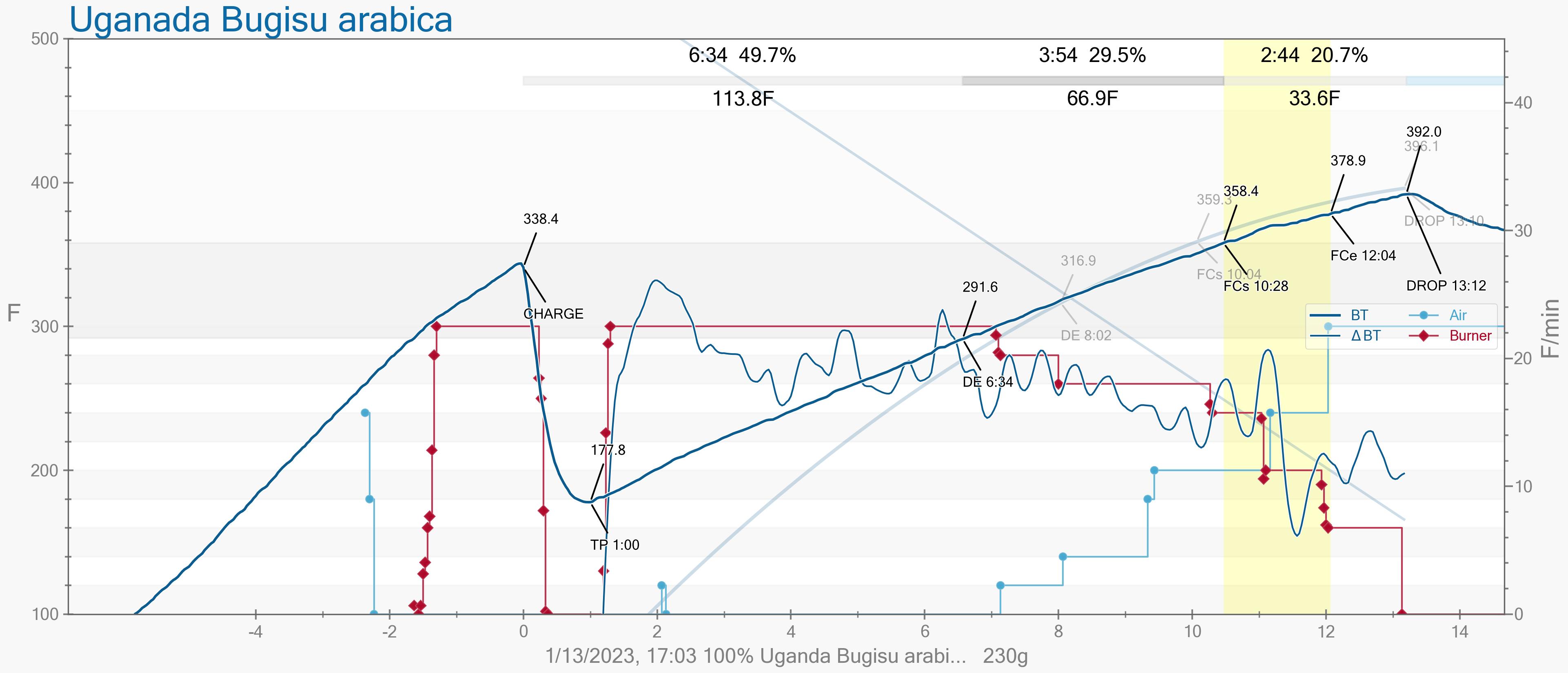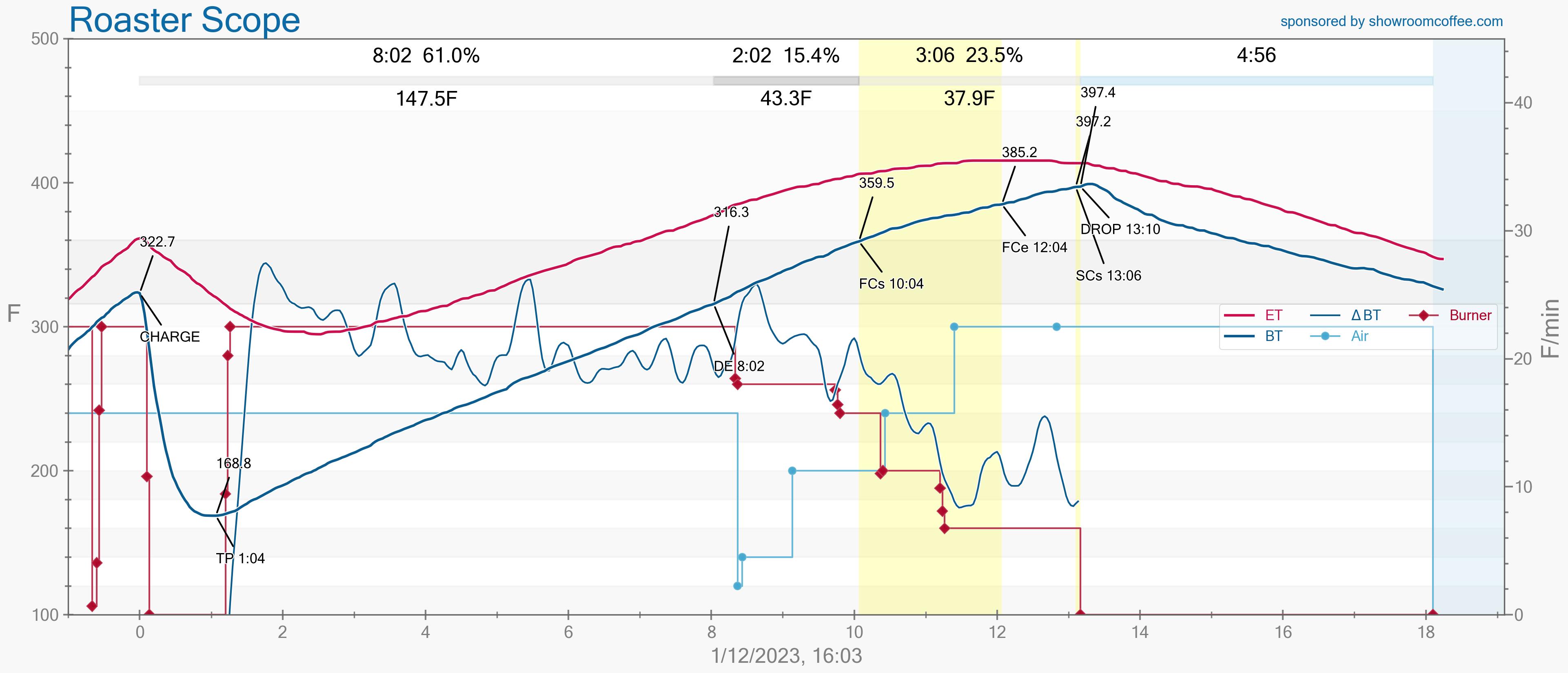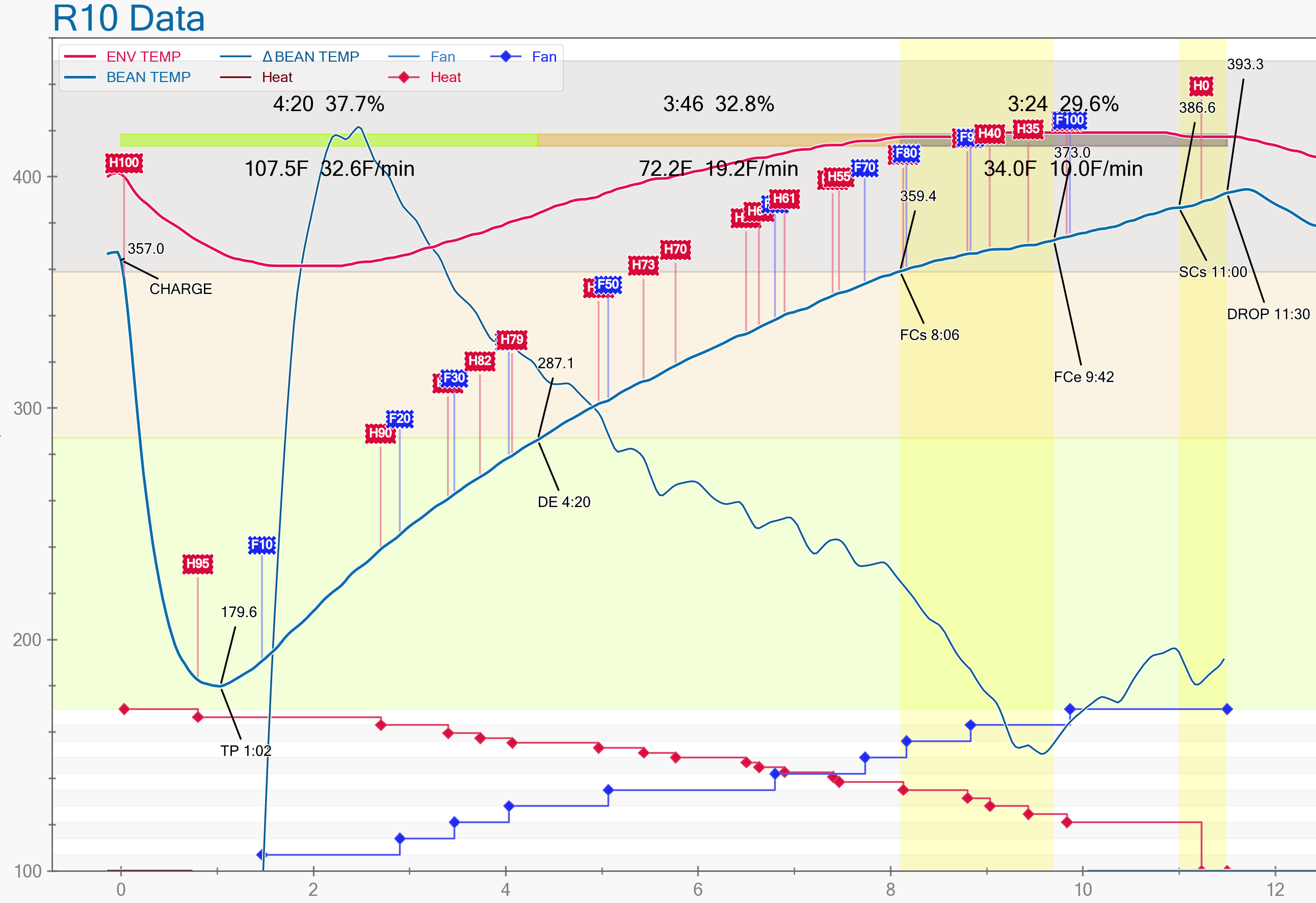
Login
Shoutbox
You must login to post a message.
renatoa
07/26/2024 3:49 PM
Bill grubbe and Jk, 

allenb
07/26/2024 5:15 AM
Spiderkw Welcome to HRO!


renatoa
07/24/2024 8:31 AM
ramiroflores and John123,

 ?
?

 ?
?renatoa
07/21/2024 1:18 AM
 , Luislobo
, Luisloborenatoa
07/19/2024 11:28 AM
Koepea, 

Forum Threads
Newest Threads
Skywalker roaster modsBackground Roast Iss...
Hello from Arkansas
TC4ESP
Green coffee reviews
Hottest Threads
| Skywalker roaster... | [375] |
| TC4ESP | [115] |
| War on Farmers by... | [47] |
| Adventures in flu... | [26] |
| Hello! (soon) Roa... | [17] |
Donations
Latest Donations
dmccallum - 10.00
JackH - 25.00
snwcmpr - 10.00
Anonymous - 2.00
Anonymous - 5.00
dmccallum - 10.00
JackH - 25.00
snwcmpr - 10.00
Anonymous - 2.00
Anonymous - 5.00
Users Online
Guests Online: 7
Members Online: 0
Total Members: 8,393
Newest Member: Bill grubbe
Members Online: 0
Total Members: 8,393
Newest Member: Bill grubbe
View Thread
Who is here? 1 guest(s)
|
New with Hottop roast profiles, flavors are unimpressive.
|
|
| DustOfMan |
Posted on 01/18/2023 9:48 AM
|
|
Newbie  Posts: 4 Joined: January 13, 2023 |
Hello all, I've been roasting on my Hottop for about a year now, and used several other devices before it. When I started with the Hottop, I based my roasts on the Hottop beginner article from Prima Coffee https://prima-cof...ast-hottop. The past year has been entirely inconsistent. I'll work through five pounds of beans 230g at a time, trying different temps/airflow/etc. Because of this I finally started running Artisan with the machine. I've done two roasts with Uganda Bugisu and they're just unimpressive. Muted flavors, kinda ashy flavor. With and without Artisan I often get a strong profile of sawdust. I'm a big fan of light/medium roasts, and while the beans end up looking in this range, I often get the taste of darker roasts. A few notes while looking at this two profiles...I believe my roast is taking too long, but I fear a higher charge, especially when switching beans. Also, I can't really can't identify when the drying phase is finished visually or by scent. I've been dropping these beans just before second crack. Probably 95% of this past year 1C starts when the bean temp is 360F. I don't know if both thermocouples are reading low, or just the BT. Finally, what the hell is up with the delta reading? Any and all assistance is greatly appreciated. I'm getting really antsy to finally have a good roast. I've been at it too long to suck.
DustOfMan attached the following images:
|
|
|
|
| allenb |
Posted on 01/19/2023 10:41 AM
|
|
Administrator  Posts: 3869 Joined: February 23, 2010 |
My advice would be to increase charge temp to just below 400f and shrink drying phase to 5 min or less, stretch Maillard phase to 5 min or longer and if you're not interested in any dark roast notes, definitely do not take the coffee up to near 40 deg F past start of 1C. 25 deg F past start of 1C should get you just past a light roast. Although, it sounds like you have tried everything imaginable with all the coffee you've run through your roaster since purchasing the hottop. A common problem many have these days is not knowing whether the green coffee you're currently buying is capable of turning out a good cup. Have you had the opportunity to test your green coffee in one of your other roasters to verify its capable? One more thing, are you saying that you have no way to judge bean color through the front window so you can log at what temperature you hit yellow (end of drying)? 1/2 lb and 1 lb drum, Siemens Sirocco fluidbed, presspot, chemex, cajun biggin brewer from the backwoods of Louisiana
|
|
|
|
| DustOfMan |
Posted on 01/20/2023 7:40 AM
|
|
Newbie  Posts: 4 Joined: January 13, 2023 |
I can only roast on my Turbo crazy aside from the Hottop, so I haven't used another roaster. Regarding the beans, they're from the buyer club, and am pretty sure they're fine. Coming out of drying phase I'm just bad at judging "yellow". |
|
|
|
| renatoa |
Posted on 01/20/2023 7:54 AM
|
|
Administrator  Posts: 3104 Joined: September 30, 2016 |
Use smell too... follow the hay notes... er... how they're gone |
|
|
|
| allenb |
Posted on 01/20/2023 7:59 AM
|
|
Administrator  Posts: 3869 Joined: February 23, 2010 |
The reason I mention the need to verify quality of our green coffee is due to there being a proliferation of just ok coffees this year and many coffees from last year as well. Lots of weather/environmental issues caused many growing regions to produce just ok greens. Other areas were negatively affected by higher selling prices allowing them to skimp on QC measures. I personally have gotten many so-so to bad greens from reliable sellers this year and unfortunately, the cupping reviews were a tad inflated. Without a way to do a benchmark, it's impossible to know if your roaster or roasting technique is off or the product you're running through it. 1/2 lb and 1 lb drum, Siemens Sirocco fluidbed, presspot, chemex, cajun biggin brewer from the backwoods of Louisiana
|
|
|
|
| DustOfMan |
Posted on 01/20/2023 9:40 AM
|
|
Newbie  Posts: 4 Joined: January 13, 2023 |
I see, and it makes sense. Though, my cups have had the same issues over the course of a year through different varieties and vendors. |
|
|
|
| allenb |
Posted on 01/20/2023 4:44 PM
|
|
Administrator  Posts: 3869 Joined: February 23, 2010 |
Here's what I'd do in your situation. Roastmasters.com sells reliably good greens from all I'm hearing. They have a sister company called Willoughbys that sell roasted coffee. Many of the greens for sale at Roastmasters are sold as roasted at Willoughbys. for instance, Guatemala El Socorro y Anexos red bourbon can be purchased both ways between the two stores. You can shop around for others that may be offered in both formats. I'm seriously thinking of doing the same thing due to some lackluster results I've experienced this year and want to be assured it is not my roasting. https://www.willo...m/TAC.html https://www.roast...urbon.html 1/2 lb and 1 lb drum, Siemens Sirocco fluidbed, presspot, chemex, cajun biggin brewer from the backwoods of Louisiana
|
|
|
|
| randytsuch |
Posted on 01/20/2023 4:56 PM
|
|
1/2 Pounder  Posts: 394 Joined: June 20, 2009 |
Klatch coffee sells greens, and the same coffee roasted as SO. https://www.klatc...shop-beans They are also a good roaster Edited by renatoa on 01/21/2023 2:02 AM |
|
|
|
| allenb |
Posted on 01/20/2023 5:24 PM
|
|
Administrator  Posts: 3869 Joined: February 23, 2010 |
Quote randytsuch wrote: Klatch coffee sells greens, and the same coffee roasted as SO. https://www.klatchcoffee.com/shop-beans They are also a good roaster Have you had a chance to evaluate their roasted coffee? if they are good at the roasting end, I may give them a shot instead of purchasing from two different shops. 1/2 lb and 1 lb drum, Siemens Sirocco fluidbed, presspot, chemex, cajun biggin brewer from the backwoods of Louisiana
|
|
|
|
| randytsuch |
Posted on 01/21/2023 8:44 AM
|
|
1/2 Pounder  Posts: 394 Joined: June 20, 2009 |
Quote allenb wrote: Quote randytsuch wrote: Klatch coffee sells greens, and the same coffee roasted as SO. https://www.klatchcoffee.com/shop-beans They are also a good roaster Have you had a chance to evaluate their roasted coffee? if they are good at the roasting end, I may give them a shot instead of purchasing from two different shops. When I was making espresso, I liked their Belle blend, made some nice shots. Also tried the SO Ethiopian they had at the time. Was a light roast, and I had trouble pulling good shots with it. I moved to another company, tried them because they had a Good christmas sale, and I liked the shots from their SO Eth. Making drip these days, but still buying this SO Eth. But I have no trouble recommending Klatch, they are good roasters. Randy |
|
|
|
| allenb |
Posted on 01/21/2023 5:06 PM
|
|
Administrator  Posts: 3869 Joined: February 23, 2010 |
I would be using their SO roasted coffees for drip coffee for the analysis of my drum roasts. I'm not clear on if you are saying you were pleased with their roasts when evaluating via drip coffee or only expresso?
1/2 lb and 1 lb drum, Siemens Sirocco fluidbed, presspot, chemex, cajun biggin brewer from the backwoods of Louisiana
|
|
|
|
| randytsuch |
Posted on 01/21/2023 6:34 PM
|
|
1/2 Pounder  Posts: 394 Joined: June 20, 2009 |
Quote allenb wrote: I would be using their SO roasted coffees for drip coffee for the analysis of my drum roasts. I'm not clear on if you are saying you were pleased with their roasts when evaluating via drip coffee or only expresso? I was only making espresso when I bought Klatch, so can't offer an opinion on drip with a Klatch SO. I would expect the drip to be good, but can't say for sure. Randy |
|
|
|
| DustOfMan |
Posted on 01/22/2023 6:37 PM
|
|
Newbie  Posts: 4 Joined: January 13, 2023 |
I was doing the same for a while from Happy Mug. My roasts were always worse. I think the beans through GCBC are mostly from RoyalNY. |
|
|
|
| kauphy |
Posted on 01/23/2023 8:54 PM
|
|
Newbie  Posts: 12 Joined: January 16, 2023 |
Hey DustOfMan, While I am new with Artisan, I've been roasting for a few years. To me, it looks like your heat and fan swings are extreme and frequent. The pic (hopefully the attachment works, first try for me) is one of my recent roasts. I'm still working on a good background roast for Artisan to follow, but you can see what I'm trying to do.
kauphy attached the following image:
Edited by kauphy on 01/23/2023 9:42 PM Hottop 2K+ w/Artisan
|
|
|
|
| renatoa |
Posted on 01/24/2023 4:03 AM
|
|
Administrator  Posts: 3104 Joined: September 30, 2016 |
What is your control system? Maybe I can suggest a better approach than just "following"... predicting is always preferable than trying to bring back on track after derailing. |
|
|
|
| kauphy |
Posted on 01/24/2023 7:15 PM
|
|
Newbie  Posts: 12 Joined: January 16, 2023 |
Hey Renatoa, I'm not sure what you're asking. I use Artisan to do the controlling with a background roast that I liked previously. I totally agree that predicting is better than following when it comes to changes to the heat, or fan, when roasting. I spent the first 10 or more roasts dialing that in to get where I had a roast that I could use in the future as the one to follow. Changes to the heat setting on the Hottop definitely lag what happens in the roaster. It also seems like the Hottop reacts to heat settings as a duty-cycle, not an actual heat percentage. That is, 90% isn't 90% of the power going to the heater, but turning on and off the heater at a 100% on for 90% of the time and 100% off for 10% of the time. I can't be sure what that time is, though, but I've seen it on the graphs of what's happening during a roast. Definitely a learning process with a new roaster and new software. I will say that I appreciate what Artisan has provided for us. |
|
|
|
| RGeorge |
Posted on 04/29/2023 5:29 PM
|
|
Newbie  Posts: 4 Joined: January 09, 2023 |
I just started roasting around last October. I started with a Hottop 2k+ and used Artisan the entire time. (The ability to use Artisan with an off-the-shelf roaster was big for me.) It's been quite a journey. I still have a way to go, but I've finally been able to get some decent roasts. I tried correlating the Hottop ET with the roast level temperatures using Sweet Maria's roast card. I had trouble finding correlation. It did give a good idea of the temperature differences of the different roast levels. Even though the roast levels are ET, the delta's seem to apply to BT for me. (I drop based on BT, not ET) I started doing 120g roasts to get more tests out of a pound, but now only do around 220g. I started with the lower charge temperature and tried some of the profiles that Roast Rebels have on their site. I've since moved to higher charge temperature. I've found that first crack is between 355 and 365 BT. To keep from getting the "flick" I usually add air right before first crack and back off right after. I've also found that it takes a little over a minute to see the effect of cutting back heat. It takes a couple routes to help figure out the timing to get what you want based on the bean. I have two roast profiles below. They are both Ethiopia Yebuna Terara SWP from SM. (My wife's favorite.) She rated the first one as an "ehhh". The second was "the best cup of coffee I've had". It's surprising to me the major difference the RoR appears to make. One of the other differences between the "not good" and the "good" is that I've started using Alarms to drive the roasts on the "good" roate. I've also started using backgrounds so that I can see the last roast and compare where I'm at. (In the good roast at around 3 minutes you see the air go up and down. I mistakenly thought I could align the background with the arrow keys.) I still have a lot to learn and would appreciate any thoughts/feedback, but I didn't find a lot of profiles for Hottops so I thought these might help. A couple other notes: - Right now I only do the soak on SWP and sometimes dry process - I tend to charge Decaf and Dry process at around 30F less than normal high altitude - I typically shoot for a 5m to 5:30m dry end (going just by 300F rather than look/smell) I'm starting to get better roasts, so it's progress.
RGeorge attached the following images:
Hottop 2k+ with Artisan
|
|
|
|
| renatoa |
Posted on 04/30/2023 2:49 AM
|
|
Administrator  Posts: 3104 Joined: September 30, 2016 |
Welcome ! Actually, the flick still occurs in the beans mass, the hot air increase just cool the probe, and the beans surface only. If flick wouldn't occur inside the bean core, we wouldn't experience first crack. The flick,i.e. abrupt temperature increase, signals the start of the exothermal phase, i.e. internal combustion inside the bean, that led to beans cracking, phase that is ending with steam release, i.e. the crash. |
|
|
|
| RGeorge |
Posted on 05/05/2023 3:31 PM
|
|
Newbie  Posts: 4 Joined: January 09, 2023 |
Quote renatoa wrote: Welcome ! Actually, the flick still occurs in the beans mass, the hot air increase just cool the probe, and the beans surface only. If flick wouldn't occur inside the bean core, we wouldn't experience first crack. The flick,i.e. abrupt temperature increase, signals the start of the exothermal phase, i.e. internal combustion inside the bean, that led to beans cracking, phase that is ending with steam release, i.e. the crash. Oh. I had thought the flick referenced the jump in RoR if you don't pull back on heat to compensate for the exothermic reaction. Hottop 2k+ with Artisan
|
|
|
|
| renatoa |
Posted on 05/06/2023 1:44 AM
|
|
Administrator  Posts: 3104 Joined: September 30, 2016 |
Right, but you compensate mostly the measurement, i.e. environment inside drum. The exothermic still happens, else would not crack. So, somewhat a palliative  happens mostly to drum roasters, or other designs with low airflow. happens mostly to drum roasters, or other designs with low airflow.No wonder why in machines with natural high convection/strong airflow. like fluid bed or hotgun, flick is almost missing, without the need to compensate somewhat. |
|
|
|
| Jump to Forum: |
Powered by PHP-Fusion Copyright © 2024 PHP-Fusion Inc
Released as free software without warranties under GNU Affero GPL v3
Designed with ♥ by NetriXHosted by skpacman








